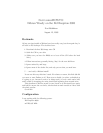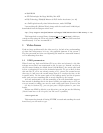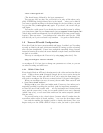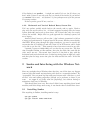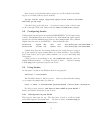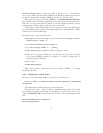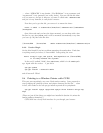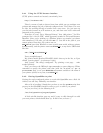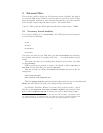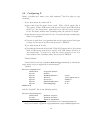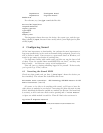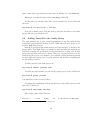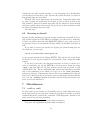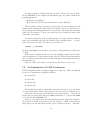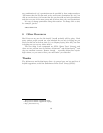
• 256M RAM
• ATI Technologies Inc Rage Mobility M4 AGP
• ESS Technology ES1983S Maestro-3i PCI Audio Accelerator (rev 10)
• a Dell Logitech scrolly-wheel infrared mouse, model M-UR69
I was working off a Debian Woody image with the stock kernel 2.2.20-idepci,
downloaded from the Rutgers mirror here:
ftp://ftp.rutgers.edu/pub/debian-cd/images/i386/debian-30r1-i386-binary-1.iso
This image had a corrupt library (libpcap0 0.6.2-2 i386.deb), which pre-
vented me from using the CD as my primary installation source (I did a network
install instead). I do not recommend it!
1 Video Issues
I had two large problems with the video card (or, for lack of my understanding
of what that incorporates, let’s say “the graphical elements of the system”).
The first prevented me from even beginning the install in a reasonable manner,
so I’m addressing them first.
1.1 LILO parameters
When I stuck my fresh new Debian CD in my drive and rebooted, a big blue
welcome screen like I am accustomed to did not pop up. Instead, as soon as
the CD started loading its default kernel (2.2.20-idepci), the screen split itself
in four, overlapping its text at the horizontal quarters. To get an idea of what
this was like (if you’re not already staring at it), picture the normal screen,
then copy it, and scoot the second image down so it overlays the first, at the
1-quarter mark. Do the same again at the halfway mark, and the 3-quarter
mark, and you have something that is utterly illegible by the bottom.
As I now understand it, this has something to do with framebuffer support.
But instead of disabling that in the kernel (which you might want to do if you
ever get around to rolling your own, for some really good reason (I’m not a fan
— see why in Section 5!)), you can just pass a couple options to your boot
loader.
Debian uses LILO by default, so at this point, you can just use the following
(I don’t know how to do it in grub, but I’m sure it’s possible):
video=vga16:off
This means that instead of hitting ‘ENTER’ as usual and watching the stock
kernel load, you will need to type:
2



